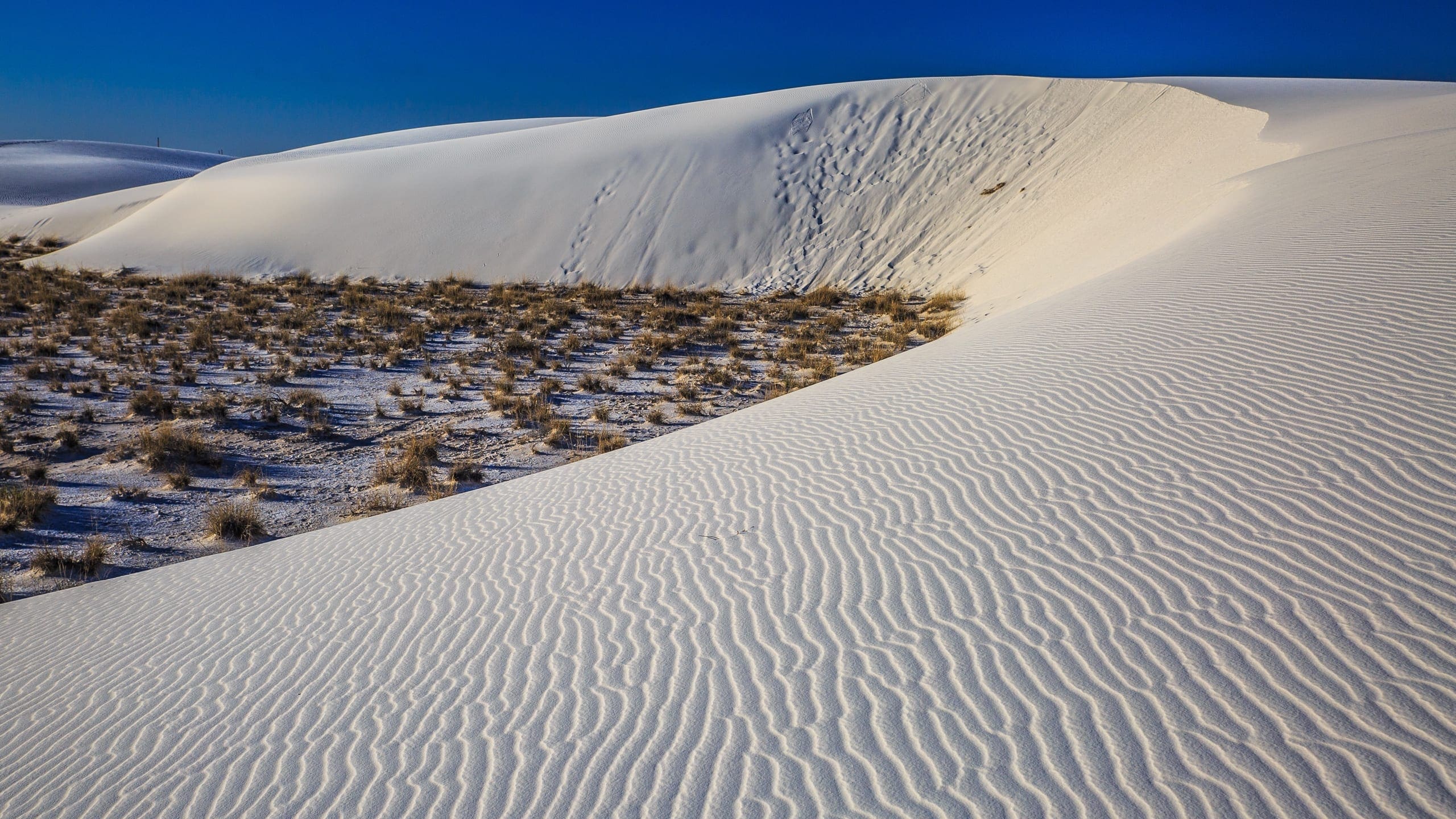About White Sands National Park
White Sands National Park is the newest National Park
From the NPS website:
“On December 20, 2019, White Sands became the 62nd national park in the United States. The congressional legislation was in Subtitle E of the 2020 National Defense Authorization Act.”
Description of White Sands National Monument:
White Sands National Monument was established on January 18, 1933 under the presidential proclamation of President Herbert Hoover “for the preservation of the white sands and additional features of scenic, scientific, and educational interest . . . .” The monument is situated about 15 miles southwest of Alamogordo, New Mexico, at the northern end of the Chihuahuan Desert in the Tularosa Basin. Positioned between the Organ, Sacramento, and San Andres mountain ranges, the monument protects a major portion (about 115 square miles) of the world’s largest gypsum dunefield. Among the most prominent features of the park are the brilliant white dunes that rise up to 60 feet in some places and move as much as 30 feet per year.
What may appear to many as a virtual wasteland actually supports a diverse ecosystem that is uniquely adapted to the gypsum dune landscape. Described as part of a “wet eolian system,” the White Sands dunefield is influenced by eolian (wind-related) processes and surface and groundwater hydrology. The two principal features in White Sands National Monument—the gypsum dunes and playas—typify these processes, attesting to past and present eolian and pluvial (precipitation-related) activities and groundwater discharge. Alkali Flat covers the northwest portion of the monument and extends southward to Lake Lucero, a playa lake in the southeast corner of the monument. Here, dazzling displays of selenite crystals, which serve as the source of the gypsum dunes, extend across the alkaline mudflats of the lakeshore, creating a geologic showcase found nowhere else in the national park system. Uniquely adapted “whitecolored” species can also be found throughout the monument, and include an animal from every class of vertebrate, except birds, in North America. Additionally, White Sands National Monument is a host to a variety of vegetation communities including alkali sacaton grasslands, desert scrub (mesquite and creosote), and isolated groves of cottonwood trees.
While the gypsum dunes and the playas are the two principal features at the monument, White Sands National Monument is “more than a sandbox.” Extraordinary cultural, paleontological, and outdoor recreation opportunities abound. The monument features perhaps thousands of archeological sites scattered throughout the backcountry, including unique archeological sites called gypsum hearth mounds that are found nowhere else in North America. Additionally, the park headquarters is a historic district listed in the National Register of Historic Places. This unique setting inspires learning, appreciation, and stewardship. The richness and diversity of human interaction with this region—from an unusual density of ancient hearth sites, to explorations of Spanish Conquistadores, to the posting of Buffalo Soldiers, to aeronautical experimentation—provides opportunities for comparing and contrasting the values and adaptations of former cultures to those of our own.
About 12,000 to 24,000 years ago, the monument’s playa lakes were part of a much larger lake known as Lake Otero, which sustained a wide array of Cenozoic species. Today, Ice Age fossils can be found along the much broader shoreline of the Lake Otero, including fossil track sites of Pleistocene mammals, primarily proboscidean (mammoth or mastodon), as well as a variety of other plant and animal life from the era. A mega-track site is the most significant paleontological discovery at White Sands National Monument to date, and represents one of the largest concentrations of Cenozoic fossil tracks within the United States and possibly the world. Significant trackways have also been found on Alkali Flat and the southern shoreline of Lake Lucero.
Nearly 500,000 people come to the monument each year to experience and learn about this amazing place. In the process, visitors also enjoy one-of-a kind hiking, sledding, backcountry camping, and other dispersed outdoor recreation experiences. In addition, the wide-open landscape offers unparalleled scenery and vast, unfettered views spanning from horizon to horizon. By night, blankets of stars stretch across the sky, creating exceptional photographic and stargazing opportunities.
Source: Foundation Document – White Sands National Monument
Fast Facts:
| Date the Park was Established: | December 20, 2019 |
| Park Area (as of 2019): | 146,344.31 acres (592.2 km2) |
| Recreational Visitors (2018 Total): | 603,008 visitors |

